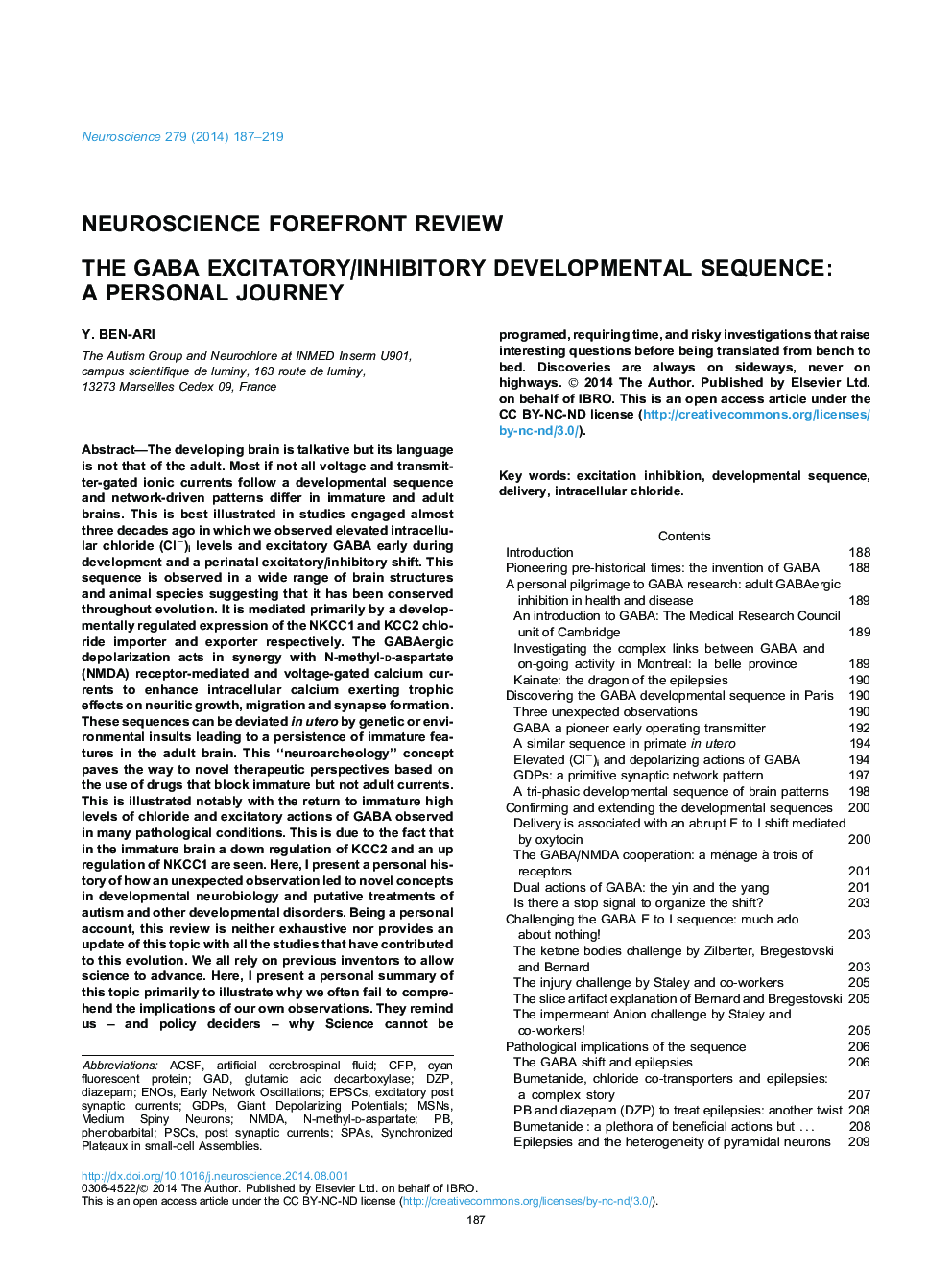| Article ID | Journal | Published Year | Pages | File Type |
|---|---|---|---|---|
| 6273369 | Neuroscience | 2014 | 33 Pages |
â¢GABA excitatory/inhibitory developmental sequence is evolutionary conserved.â¢Excitatory GABA plays a fundamental role in many developmental processes.â¢The oxytocin-mediated GABA shift during delivery is abolished in autism.â¢Immature currents including E GABA persist in pathological conditions.â¢Therapeutic strategies using selective antagonists of immature currents in adults.
The developing brain is talkative but its language is not that of the adult. Most if not all voltage and transmitter-gated ionic currents follow a developmental sequence and network-driven patterns differ in immature and adult brains. This is best illustrated in studies engaged almost three decades ago in which we observed elevated intracellular chloride (Clâ)i levels and excitatory GABA early during development and a perinatal excitatory/inhibitory shift. This sequence is observed in a wide range of brain structures and animal species suggesting that it has been conserved throughout evolution. It is mediated primarily by a developmentally regulated expression of the NKCC1 and KCC2 chloride importer and exporter respectively. The GABAergic depolarization acts in synergy with N-methyl-d-aspartate (NMDA) receptor-mediated and voltage-gated calcium currents to enhance intracellular calcium exerting trophic effects on neuritic growth, migration and synapse formation. These sequences can be deviated in utero by genetic or environmental insults leading to a persistence of immature features in the adult brain. This “neuroarcheology” concept paves the way to novel therapeutic perspectives based on the use of drugs that block immature but not adult currents. This is illustrated notably with the return to immature high levels of chloride and excitatory actions of GABA observed in many pathological conditions. This is due to the fact that in the immature brain a down regulation of KCC2 and an up regulation of NKCC1 are seen. Here, I present a personal history of how an unexpected observation led to novel concepts in developmental neurobiology and putative treatments of autism and other developmental disorders. Being a personal account, this review is neither exhaustive nor provides an update of this topic with all the studies that have contributed to this evolution. We all rely on previous inventors to allow science to advance. Here, I present a personal summary of this topic primarily to illustrate why we often fail to comprehend the implications of our own observations. They remind us - and policy deciders - why Science cannot be programed, requiring time, and risky investigations that raise interesting questions before being translated from bench to bed. Discoveries are always on sideways, never on highways.
